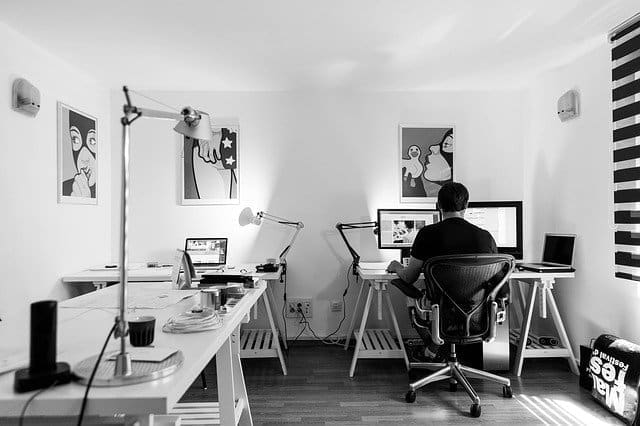Many of today’s designers have left offices and are working for themselves. In a cozy chair, next to their favorite mug of coffee, plaid, and cat at home. Or in a co-working space, getting to know new and interesting people. The work of a freelance designer is convenient and profitable on the one hand but very complex and problematic on the other. Let’s get to the bottom of it!
Pros and cons of freelancing for a designer
Pros:
- You can choose for yourself the most interesting and profitable orders;
- Your schedule is flexible. You can work at night, even if it’s two hours a day. And you can even work around the clock;
- Planning your own business is much easier because you can choose when and for how long to get away from the current affairs: to go to the store for bread, go for a walk with friends, or even go on vacation;
- Your superiors don’t control you, don’t push you around. Your boss in the ocean of freelancing is the customer;
- you do not depend on your other colleagues, for example, on the marketer who crookedly sets tasks or on the art director who suddenly got sick or went on vacation;
- you can find regular customers and provide yourself with work for a long time;
- There is no need to spend time and money on travel. And nerves too, by the way;
- You can draw your layouts while lying on the sand on the ocean, drinking Pina Colada.
Cons:
- You have to look for your own clients. It takes a lot of time;
- As you work directly with clients, you spend a lot of time clarifying all the circumstances, dealing with money issues, and discussing the nuances of the job;
- you don’t always have orders;
- If you work from home, you will likely be more often distracted by various household chores;
- All the tools you buy yourself or switch to free versions. For example, the web tool built by Retoucher Online removes the background of a photo right in your browser.
- There is a risk of being cheated by your client. You do the work, and the client accepts it and leaves without paying;
- There are no free cookies and lattes from the corporate coffee machine.

What kind of designers are good for freelancing?
Freelancing is ideal for introverted people who like to work alone, rely solely on themselves, and know firsthand about time management. Only a person who knows how to competently manage their work time will be able to determine the schedule and work productively for their own benefit. If a designer is not used to independence, can not determine when it is most convenient to work, and does not know how to communicate with customers, it is better to wait with freelancing. Since there are all kinds of customers, each with their own character and requirements, you must constantly balance — not to let them sit on your head (in a case where “And do another 356 versions of this logo, please”), but also not to refuse good customers right away (“Oh, he did not like my first version? Let him look for another designer! I don’t have time for the second one!”).
Is it worth it for new designers to switch to freelance?
Yes and no. A beginner doesn’t know much yet. To start, it is still better to work in a team. For example, in a web studio where there are more experienced professionals. They will point out the mistakes, criticize you and say, “redo everything. Yes, this may not always be pleasant. But it will definitely do you good! You will reel in all your mistakes and try not to make them in the future.
On the other hand, a beginner can also become a freelancer to gain experience. To start with small orders, with small budgets, work “in the table” for the portfolio. The more so because even if you have done something wrong, you can always turn to your colleagues on the Internet, where you can find all the educational information. There are millions of tutorials for every taste on the web.
Conclusion
There are two types of freelance designers:
Type 1
- Earns good money;
- Has regular money customers;
- Makes beautiful, unusual, and high-quality designs.
Type 2
- Earnings are low at first, then high, and then low again;
- Few regular customers; work is there and not there;
- Makes common designs. Works are usually designed for the general consumer.
Unfortunately, most designers are Type 2. In terms of the ratio of Type 1, it is probably somewhere around 9 to 1. Only one can boast of a high income and quality clientele of the ten designers.
Featured Image by tookapic from Pixabay




